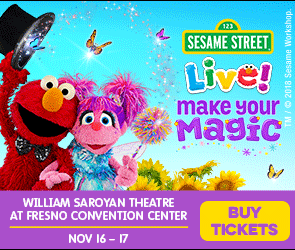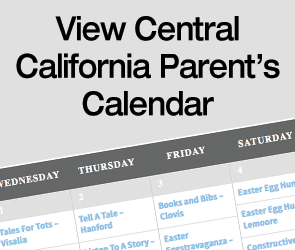Family Values: How to Create the Road Map for Kids to Follow for a Lifetime

by Kelly James-Enger
You’ve probably seen the popular “family rules” wall hangings that say things like, “say ‘I love you,’” “share,” and “listen to your parents.” Our family has one that hangs in the kitchen of our house, and I love its continual reminders about how to behave. Yet I’ve realized that when it comes to family values, ours can be summed up in two words—respect and compassion.
I’m always reminding my kids to treat themselves, other people, and even the planet with respect and compassion. I feel like if they do, they’ll grow up to be productive and hopefully happy adults who will make a positive difference in the world. That’s my hope, anyway.
Whether you realize it or not, your words and actions are always communicating your personal values to your kids. Identifying those values can underscore their importance to your children. (For example, my kids know that I hate to be late, but recently I framed it in terms of respect—how being late is disrespectful to the person waiting on you. Now they “get it.”)
However, every family’s values vary, and the key isn’t what you choose as your values, but that you take the time to identify your own and talk about them with your kids.
What are family values, anyway?
“Family values are the qualities or goals that matter most to families. They’re very personal and evolving things,” says Eileen Kennedy-Moore, PhD, a Great Courses professor of “Social and Emotional Intelligence for Every Child” and author of Smart Parenting for Smart Kids (Jossey-Bass, 2011). “When our children are young, we may place a greater value on togetherness; as they get older, independence may come more into the spotlight, but love in all its forms tends to be a strong value for most families at all stages of life.”
Your family’s values probably encompass what you think is important, and what you want your children to embrace. Kerry Quirin, those values include faith in God, gratitude, and a strong work ethic. “I really want to instill a solid moral code in them,” explains Quirin, the mother of three kids, Claire, 13, Brenna, 10, and Joe, 8. “I hope that [as they get older] they refer back to their relationship with God. I’ll say, ‘I know that you don’t understand why I want you to go to church every week, but it is something that you will understand when you are 30…I want you to believe in something bigger than yourself.’”
Quirin’s parents always emphasized the importance of a strong work ethic, and now Quirin does the same with her kids. “Every day isn’t going to be butterflies and rainbows—there are going to be days where you don’t want to do something, but that’s your job and your responsibility—other people may be counting on you,” she says.
The family you grew up with has a powerful influence on the values you choose to emphasize with your children. “Inclusion is a very important value to us because we have three kids that are so close together,” says Jessica Brosche, the mom of three young sons—Connor, 5 and a half, Oscar, three and a half, and Spencer, 19 months. “We always make it a point [to our boys] to ‘make sure that your brothers are included’…It was the way I was brought up, that family came first and you wanted to make sure that your family’s needs and wants were taken care of before you started branching out to your friends.”
The values of the O’Flaherty family stem from two primary pieces—their faith, and the Irish piece of their culture, says Peggy O’Flaherty, mom to five—Grania, 13; Enya,12; Cillian, 10; Liadan, 9; and Orla, 5. Like the Qurins, the O’Flaherty family also emphasize the importance of doing your best. “My husband moved here from Ireland [as a child], and his parents didn’t come from Ireland for him to have an ‘okay’ life,” she says. “We tell our kids that life is about choices, and you can choose to work hard or choose not to work hard.”
Honing in on your values
So how do you identify your family’s unique values? O’Flahertry, who is also a spiritual counselor and the owner and founder of Creating Space, LLC, suggests you start with a discussion between you and your partner. “I think it’s a good thing for you and your husband to sit down and talk about what you desire for your family, as individuals, and as a whole,” she says. “What are your core values? What really matters to you, and how are you going to live that out as a couple and a family unit?”
Does those values include service to others? Education? Family? Curiosity? Always doing your best? Living green? Exploration? There are no right or wrong answers; your values should reflect what you hold true, and what you would like to see your children embrace both now and in the future. The next step is to talk about those values—and live them.
“We tend to lecture but it’s better to get kids thinking, such as by asking, ‘what’s the kind thing to do here?’” says Kennedy-Moore. “We have to teach values by doing, rather than lecturing. When they see you being kind toward the checkout person, it makes them see that is the way we do it…you have to live your values, not just lecture [about] them.”
Communicating by example
As Kennedy-Moore points out, you can’t simply announce your values and expect your children to absorb them. You demonstrate them and teach your children how to do the same. When it comes to learning to be grateful, for example, “I always kind of point out to my kids that a certain positive thing didn’t just happen,” says Quirin. “I’ll say, ‘let’s back it up a bit and look at the chain of events of things that happened…things don’t just happen to you—someone thought of you or of me, and this is what we got out of it.”
One of Kennedy-Moore’s self-proclaimed family values is kindness. “When my kids were younger, we would go around the table and they would report a kindness they had done that day,” she says. “As they got older and mouthier and would say they hadn’t done a kindness, I’d say, ‘well, you’ve got two hours before bedtime so you’d better do something. If you’ve spent the whole day and haven’t done anything kind, you’ve wasted your day.’”
Brosche modeled the value of inclusion from the time her second son was born. “From the very beginning, Connor was in the bedroom when we were feeding the baby,” she says. “He would sit and watch TV and he was a part of the whole process of going to bed. Now they sit together and read their books at night [while she feeds her youngest son]—they like that wind-down time together.”
For O’Flaherty and her husband, teaching values involves helping their kids learn how to incorporate them in their lives. “We talk with our kids all the time about what it means to live our faith, and what does that look like for our family,” she says. Because the O’Flahertys believe in demonstrating their faith through love, each night she asks her kids about their days before they go to bed. “I ask, ‘when was the moment when you felt the most love—either you gave it or received it—or when did you feel the absence of love.’ We thank God that we had those experiences and then try to be more aware of it tomorrow…to enter into the next day looking to give and receive more love. That’s how I try to incorporate the idea of prayer and love into a daily practice.”
However you approach them, your family’s values serve as a road map for your children, not only now but as they grow into adults. They help guide them through experiences that you won’t be on-hand to help them value, and that’s an essential part of parenting.
“A ‘core value approach’ is useful because you can’t cover every situation that your kids are going to encounter,” says Kennedy-Moore. “When you teach them core values, that becomes their compass moving forward.”
So think about the path you want your kids to take—and let your values help them navigate in that direction.
Central California Parent is the #1 FREE parenting resource for Central Valley families.
Stay connected with Central California Parent throughout the month!
• Like Us on Facebook
• Follow Us on Instagram
• Follow Us on Pinterest
• Follow Us on Twitter
• Subscribe For our Family E-Newsletter
• Read Our Digital Edition
• Enter for our FREE Giveaways








